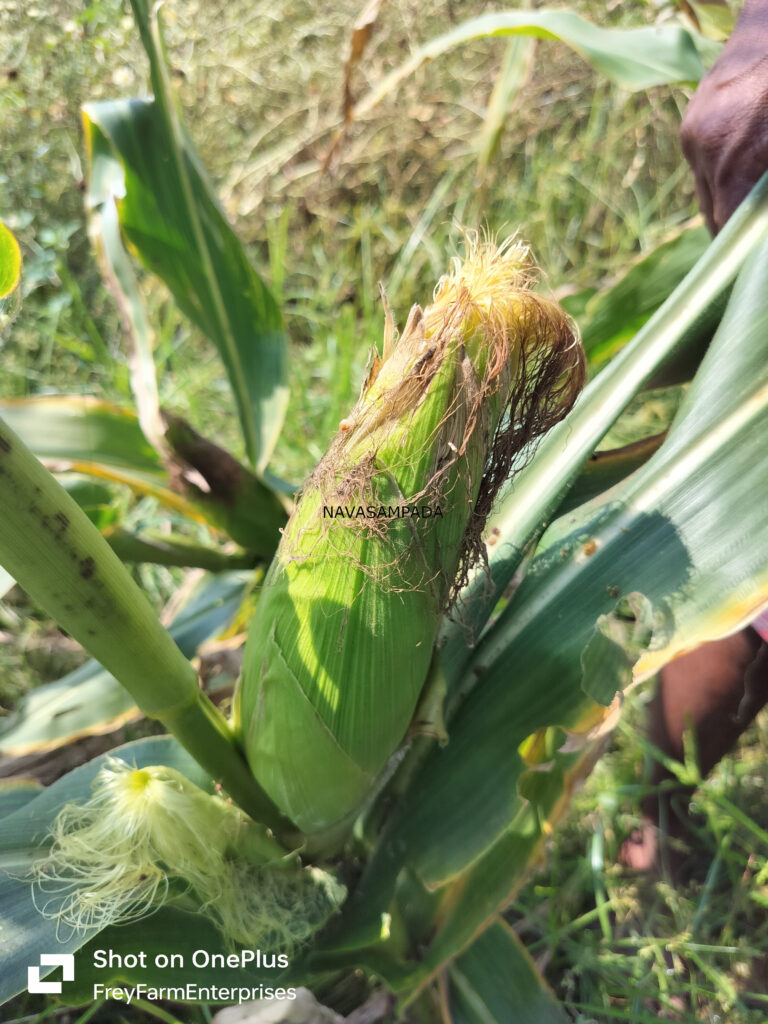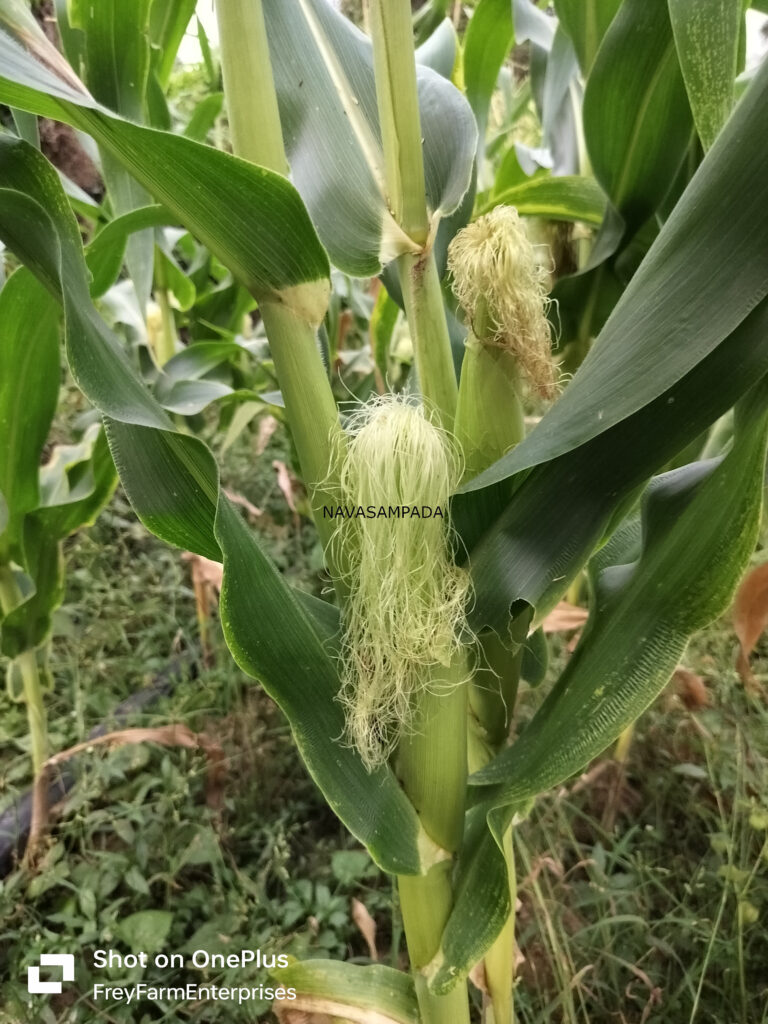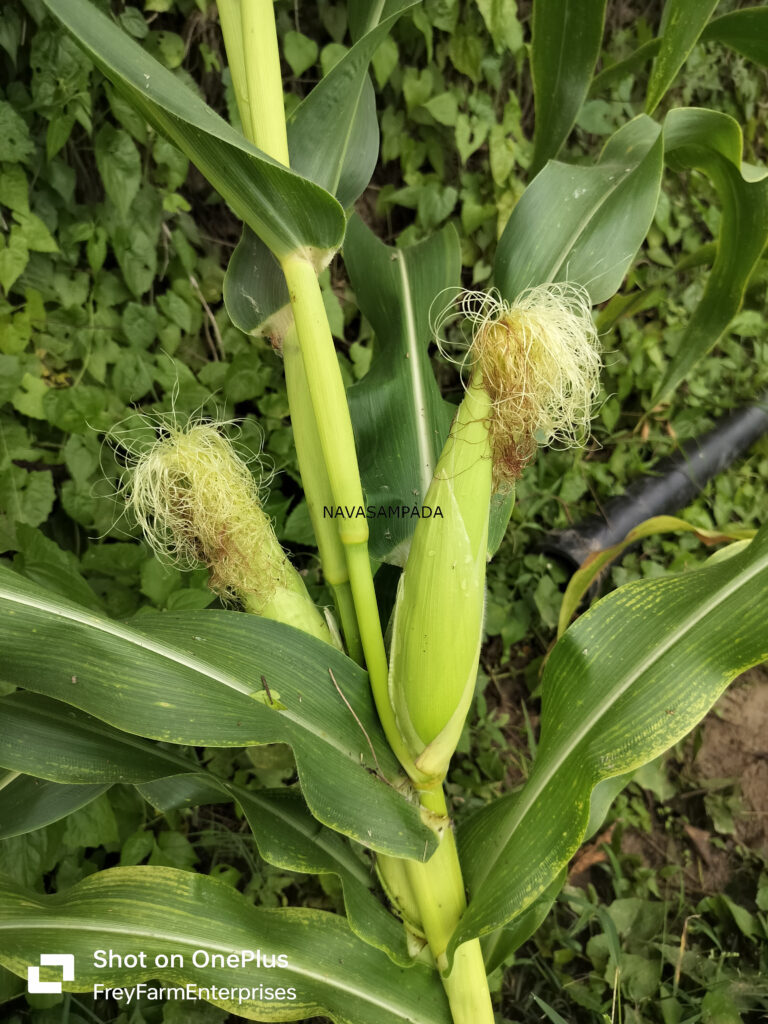Corn is one of the most widely grown crops globally, essential for human consumption, animal feed, and industrial use. Whether you’re a beginner or an experienced farmer, successfully growing corn requires careful planning and management across all stages of the crop’s lifecycle. This guide provides step-by-step insights into the practices needed to grow healthy, high-yielding corn crops.
Planning and Choosing the Right Corn Variety
Before planting corn, it’s essential to select the right variety based on your farming goals, climate, and field conditions.
Climate Considerations:
- Corn thrives in warm climates with temperatures between 60°F to 95°F (15°C to 35°C).
- It requires at least 68 hours of sunlight and warm soil temperatures (above 50°F or 10°C) to germinate.


Selecting Corn Varieties:
- Field corn: Grown for grain or silage, used in animal feed or processed into products like flour or ethanol.
- Sweet corn: Grown for human consumption, harvested earlier for tender, juicy kernels.
- Popcorn: A special variety with a thicker hull that pops when heated.
- Hybrid vs. Open-pollinated: Hybrid varieties generally offer higher yields and better resistance to disease and pests. Open-pollinated varieties are often chosen for seed saving and organic farming.
Field Location:
- Well-drained fields with fertile soil are ideal. Avoid areas prone to waterlogging or with heavy clay soil.
Soil Preparation
Soil health is a critical factor in determining the success of your corn crop. Start with soil testing to ensure optimal growing conditions.
Soil Testing:
- Test for pH, nutrient levels, and organic matter content. Maize thrives in slightly acidic to neutral soils (pH 5.8 to 7.0).
Soil Amendments:
- Adjust pH with lime to raise acidity or sulfur to lower it.
- Add organic matter (compost, manure) to improve soil structure and nutrient availability.
- Use fertilizers based on your soil test to address specific deficiencies, especially nitrogen, phosphorus, and potassium.
Tillage:
- Plow or till the soil to break up compaction, improve aeration, and create a fine seedbed. This also helps control weeds and prepare a level surface for planting.
Planting Corn
Proper timing and spacing are essential to give corn the best chance for high yields.
Timing:
- Plant Maize once soil temperatures reach 50°F–60°F (10°C–15°C), typically in late spring after the risk of frost has passed.
Spacing:
- Plant seeds 1.5 to 2 inches deep, with 6–12 inches between seeds within the row.
- Space rows 30–36 inches apart to allow ample room for growth without competition for light and nutrients.
Fertilization:
- Apply a starter fertilizer (e.g., 10-34-0) at planting to promote early root development.
Watering and Irrigation
Maize requires consistent moisture, especially during critical growth stages like tasseling and pollination.
Water Requirements:
- Maize needs 1 to 1.5 inches of water per week, with increased demand during tasseling and pollination.
- Water stress during these periods can drastically reduce yields.
Irrigation Systems:
- If rainfall is insufficient, consider installing drip irrigation or sprinkler systems.
- Water early in the morning to minimize evaporation losses.
Weed, Pest, and Disease Management
Managing weeds, pests, and diseases is vital to maintaining healthy corn plants and maximizing yields.
Weed Control:
- Use pre-emergence herbicides or mechanical tillage to manage weeds.
- Cultivate between rows to prevent weed competition without using chemicals.
Pest Management:
- Common pests include corn borers, rootworms, and aphids.
- Regularly scout for signs of infestations and consider Integrated Pest Management (IPM), which includes crop rotation, biological controls, and targeted pesticide use.
Disease Prevention:
- Fungal diseases like corn smut and blight can be problematic.
- Choose disease-resistant varieties, maintain proper plant spacing, and practice crop rotation to reduce the build-up of pathogens in the soil.
Fertilization Throughout Growth
Maize is a nutrient-demanding crop, especially in nitrogen.
Side-dressing:
- Apply nitrogen fertilizer around the time the plants reach knee height to support strong stalks and ear development.
Leaf Testing:
- Regularly test the leaves for signs of nutrient deficiencies, adjusting your fertilization plan accordingly.
Pollination and Growing Stages
Pollination is one of the most critical stages for Maize, and it is influenced by environmental factors.
Pollination:
- Corn is wind-pollinated, meaning the male flowers (tassels) release pollen that is carried to the female flowers (silks).
- Ensure proper row spacing to allow for good air circulation to facilitate effective pollination.
Silk Emergence:
- Silk emerges around two weeks after tasseling. Each silk corresponds to one kernel on the ear. For kernels to develop, each silk must be fertilized by pollen.
Harvesting Corn
Timing your harvest is crucial for both quality and yield.
Maturity:
- Field corn: Harvest when the kernels are fully mature (hard and dented) and husks are dry.
- Sweet corn: Harvest when kernels are plump, tender, and in the milk stage, meaning they are juicy but not yet hard.
Moisture Content:
- Field Maize should be harvested when moisture content is around 20–25% for optimal storage.
- For sweet corn, harvest when kernels are tender, and the sap oozes out when the kernel is punctured.
Harvesting Methods:
- Small farms can hand-harvest, while larger farms may use mechanical harvesters to strip the husks, gather the ears, and prepare them for storage.
Post-Harvest Processing and Storage
Proper post-harvest care ensures that your corn remains in good condition for storage or sale.
Drying:
- For field corn, dry the kernels to a moisture content of 15% or lower for safe long-term storage.
- Air dryers or natural drying in the field are effective methods, depending on weather conditions.
Storage:
- Store dried Maize in clean, dry, and pest-proof containers like silos, bins, or sealed bags.
- Good storage conditions prevent mold, spoilage, and pest infestations.


Post-Harvest Management and Crop Rotation
Managing your farm after harvest prepares it for the next planting season and helps maintain soil health.
Crop Rotation:
- Rotate corn with other crops, such as soybeans, legumes, or small grains, to help restore nutrients to the soil and reduce pest and disease buildup.
Soil Testing:
- Conduct a soil test after harvest to assess nutrient levels and plan for fertilization in the next season.
Field Cleanup:
- Clear leftover crop debris to prevent pests and diseases from carrying over into the next planting season.
Health Benefits of Maize: A Nutritious Staple for Your Diet
Maize, a versatile and widely consumed grain, offers numerous health benefits. While often associated with processed foods, this whole grain is packed with essential nutrients and can play a significant role in maintaining good health. Let’s explore how including this nutritious food in your diet can support various aspects of wellness.
1. Packed with Essential Nutrients
Maize is an excellent source of carbohydrates, making it a great energy booster. It provides important fiber, which aids digestion and promotes gut health. Additionally, this grain is rich in several essential vitamins and minerals, such as:
- B vitamins like thiamine (B1) and folate (B9), which support energy production and cellular health.
- Minerals including magnesium, potassium, and phosphorus, all of which are crucial for muscle function, bone health, and electrolyte balance.
2. Promotes Digestive Health
The high fiber content in maize helps maintain a healthy digestive system. Insoluble fiber adds bulk to stool, preventing constipation, while soluble fiber fosters the growth of beneficial gut bacteria, which supports overall digestive health. A healthy gut is essential for nutrient absorption and immune function.
3. Supports Heart Health
This grain is beneficial for cardiovascular health in several ways:
- Fiber: Consuming fiber-rich grains like maize can help lower levels of LDL cholesterol (the “bad” cholesterol), which in turn may reduce the risk of heart disease.
- Antioxidants: Maize contains powerful carotenoids, such as lutein and zeaxanthin, which help reduce oxidative stress and inflammation, factors that contribute to heart problems.
- Potassium: This mineral helps regulate blood pressure, reducing the likelihood of hypertension and supporting heart function.
4. Supports Eye Health
Maize is naturally rich in lutein and zeaxanthin, two important antioxidants that are essential for eye health. These compounds help protect the eyes from damage caused by harmful UV rays and may reduce the risk of age-related macular degeneration (AMD) and cataracts.
5. Naturally Gluten-Free
For those who follow a gluten-free diet due to celiac disease or gluten sensitivity, maize is an ideal option. It is naturally free from gluten and can be used in various forms like maize flour, maizemeal, or popcorn as substitutes for wheat-based products in baking and cooking.
6. Rich in Antioxidants
Maize contains several beneficial antioxidants, including phenolic compounds and carotenoids. These antioxidants help neutralize free radicals in the body, reducing oxidative stress and inflammation, which are linked to chronic diseases like cancer and heart disease.
7. Good for Skin Health
The antioxidants found in maize, especially carotenoids, may offer skin-protecting benefits. These compounds help guard against UV damage and oxidative stress, which can lead to premature skin aging. Additionally, vitamin C in maize contributes to collagen production, supporting skin elasticity and repair.
8. Helps with Weight Management
Maize can be a great addition to a weight management plan. The fiber in this grain helps you feel fuller for longer, which can reduce overall calorie intake. Additionally, the complex carbohydrates in maize provide a steady release of energy, helping to keep your metabolism stable throughout the day.
9. Rich in Phytochemicals
Maize is also rich in beneficial phytochemicals, such as ferulic acid and anthocyanins (found in colored varieties). These compounds have anti-inflammatory properties and may even have cancer-fighting effects. The unique combination of phytochemicals in maize can enhance overall health and well-being.
10. Supports Bone Health
The minerals found in maize, particularly magnesium and phosphorus, are essential for maintaining strong bones. These minerals help with bone mineralization, supporting bone density and strength. Regular consumption of maize can contribute to a healthy skeletal system, preventing conditions like osteoporosis.
How to Maximize the Health Benefits of Maize
To get the most nutritional value from maize, consider the following tips:
- Eat whole maize: Opt for unprocessed forms like fresh kernels, maizemeal, or popcorn. These options retain most of their fiber and nutrients.
- Pair with healthy fats: Eating maize with healthy fats, such as olive oil or avocado, can help improve the absorption of fat-soluble vitamins and carotenoids.
- Avoid processed products: Try to minimize your intake of heavily processed maize products, which often contain added sugars or unhealthy fats that can diminish their health benefits.
Conclusion
Successful corn farming requires attention to detail and careful management at every stage, from selecting the right variety to post-harvest care. By following best practices for soil preparation, planting, irrigation, pest control, and timely harvesting, you can maximize yields and grow a sustainable and profitable crop. Whether you’re farming on a small scale or a large commercial operation, these principles will help ensure that your corn farming venture is both productive and rewarding.
Maize is a nutritious and versatile food that offers numerous health benefits. Packed with fiber, vitamins, minerals, and antioxidants, it supports heart health, digestive function, eye health, and skin protection. Whether you enjoy it as a whole grain, in the form of maizemeal, or as a gluten-free option, incorporating this nutrient-dense grain into your diet can contribute to a healthier lifestyle.
